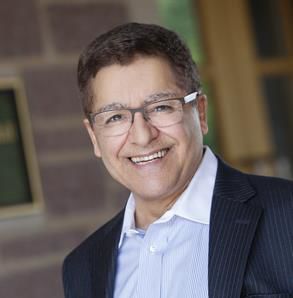WU researchers offer virus model that weighs health, economy
Published May 28, 2020
While countless models have projected health outcomes for various responses to the coronavirus pandemic, Arye Nehorai, a professor of electrical engineering at Washington University, had not seen models that offered both public health and economic projections.
So Nehorai, an Israeli from a town north of Haifa, decided to create one.
He and two Washington University doctoral candidates, David Schwartzman in business economics and Uri Goldsztejn in biomedical engineering, worked to create a model published by the university earlier this month that offers three reopening scenarios and correlated outcomes in hospitalizations, deaths and economic productivity.
ADVERTISEMENT
The central takeaway from the model produced by the three academics, all of whom are Jewish?
“We predicted that if the economy is opened too quickly, then there will be a second wave” of infections, said Nehorai, who moved to St. Louis in 2006. “I don’t think anything we say is surprising, but the point is that even if it makes sense to me or you, it doesn’t mean that people do what makes sense to other people. This is why we thought it was important to [produce] a mathematical, scientific model that shows more pointedly, more completely, the effects of different policies.”
The model forecasts outcomes for a scenario in which most of the population remains under strict quarantine for 76 weeks, the length of time that the researchers project it would take for a vaccine to become available; a scenario in which non-seniors (which the authors define as people under age 60) are quickly released from quarantine after the disease is fairly well contained; and one in which non-seniors are slowly released from quarantine after the disease is fairly well contained.
The lengthiest quarantine, according to the model, would lead to about 208,000 deaths and a 34% decrease in economic productivity. The slow-release scenario would result in about 222,000 deaths and a 29% decrease in economic activity.
The quick-release scenario would lead to a dramatically worse health outcome: 790,000 deaths, with only a slight lessening of the economic pain.
ADVERTISEMENT
“All three scenarios will not bring us to the same economy that we had before this pandemic,” Nehorai said. “The idea is that all the measures, the quarantine and the other measures, can be only a bridge until we get a vaccine.”
St. Louis and St. Louis County started to reopen some businesses May 18 to allow gatherings of fewer than 10 people, provided that the businesses have strong safeguards in place. Nehorai said he has shared the researchers’ model with St. Louis County Executive Sam Page.
“I think St. Louis has given instructions quite clearly,” Nehorai said. “I think they have been careful and coherent in their instructions, and I think overall, I give them credit for not reopening the economy too quickly.”
Nehorai also praised the Israeli government’s response to the pandemic.
“They responded very well, and there are some factors that helped them,” he said. “They are a smaller country, and in my opinion, they are more used to security issues, so [people] would be more cooperative with the government than here. I also give credit to the government that they did the right thing and prevented people from entering the country, or if they came, they had to go into quarantine for two weeks. So they did a good job in many ways.”
















